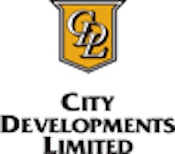While government regulations and guidelines are important in raising the environmental standards of an industry, landlords also play a key role in encouraging sustainable behaviour among their tenants.
Singapore’s building regulator, the Building and Construction Authority (BCA), recently brought that role to the forefront with the introduction of three new Green Mark schemes directed not at developers and building managers but at tenants with heavy energy consumption.
The BCA Green Mark schemes typically provide guidelines for new and existing developments and give direction to building owners; they also establish benchmarks for sustainable buildings.
Now, the new schemes – Green Mark for Supermarkets, Green Mark for Retail and Green Mark for Data Centres – lay out similar guidelines for tenants. All three were introduced during the three-day International Green Building Conference 2012 held at Marina Bay Sands this week.
At a workshop on the conference’s third day, speakers from the BCA explained that the new schemes follow the same framework as existing Green Mark schemes – focusing on energy efficiency, water efficiency and waste management among others – with the difference that these target individual tenants rather than entire buildings.
BCA Green Mark executive manager Mr Kong Jia Hng shared several tips on how retailers can be green tenants, beginning with reducing their energy consumption.
Pointing out that the retail sector is one of the least energy-efficient, he suggested that retailers can reduce their energy footprint by installing LED light fixtures, for example, or use Green Label materials when renovating their outlets. They can also help to reduce packaging waste by encouraging shoppers to use fewer plastic bags.
As an example of how the Green Mark criteria can act as a guideline for developers, JTC senior land resource analyst Mr. Foo Cexiang also presented a case study of the CleanTech Park, Singapore’s first eco-business park.
The planning and development of the park, he said, was based on sustainable principles outlined by the Green Mark for Districts scheme, a rating system on the environmental performance of a district introduced in 2009.
For example, the park follows Green Mark guidelines on alternative water sources by channelling storm runoff for non-potable water use in buildings, and makes provisions for future expansion by installing pre-laid cables and pipes to minimise digging up and re-laying of roads.
Listeners, however, did not appear to be fully convinced. Several members of the 50-strong audience questioned the developer’s ability to protect flora and fauna on the site throughout the construction period, which is estimated to continue through 2030.
Others pointed out that despite the landlord’s efforts to conserve a “green core” within the development, it is much more difficult to control tenants’ approach.
“We try to educate our tenants about the park’s underlying sustainable principles,” replied Mr Foo, adding that the areas identified as the “green core” are kept out of allocatable lots.
He admitted, however, that there is a tendency for many contractors to simply raze all the trees on a site, and that the consultants for the park’s development have to continuously monitor the progress of the construction work to ensure that the sustainable blueprint is adhered to.
In addition, he said that JTC is developing a set of guidelines for tenants on managing their parcels of land. These guidelines include benchmarks for the amount of energy buildings consume and limits on the amount of waste they can produce. There is also a list of community activities for tenants to engage in.
Ultimately, he explained, it is a question of managing tenants’ expectations – which should be reasonably easy for the CleanTech Park, as its target tenants are companies that already have a strong sense of community responsibility and generally practice sustainability.
However, it does fall to the landlord to get the ball rolling. “As a responsible landlord, JTC has the opportunity to put in place these guidelines which we can convince our tenants to abide by,” said Mr Foo.
Eco-Business.com’s coverage of the International Green Building Conference 2012 is brought to you by City Developments Limited (CDL).






















